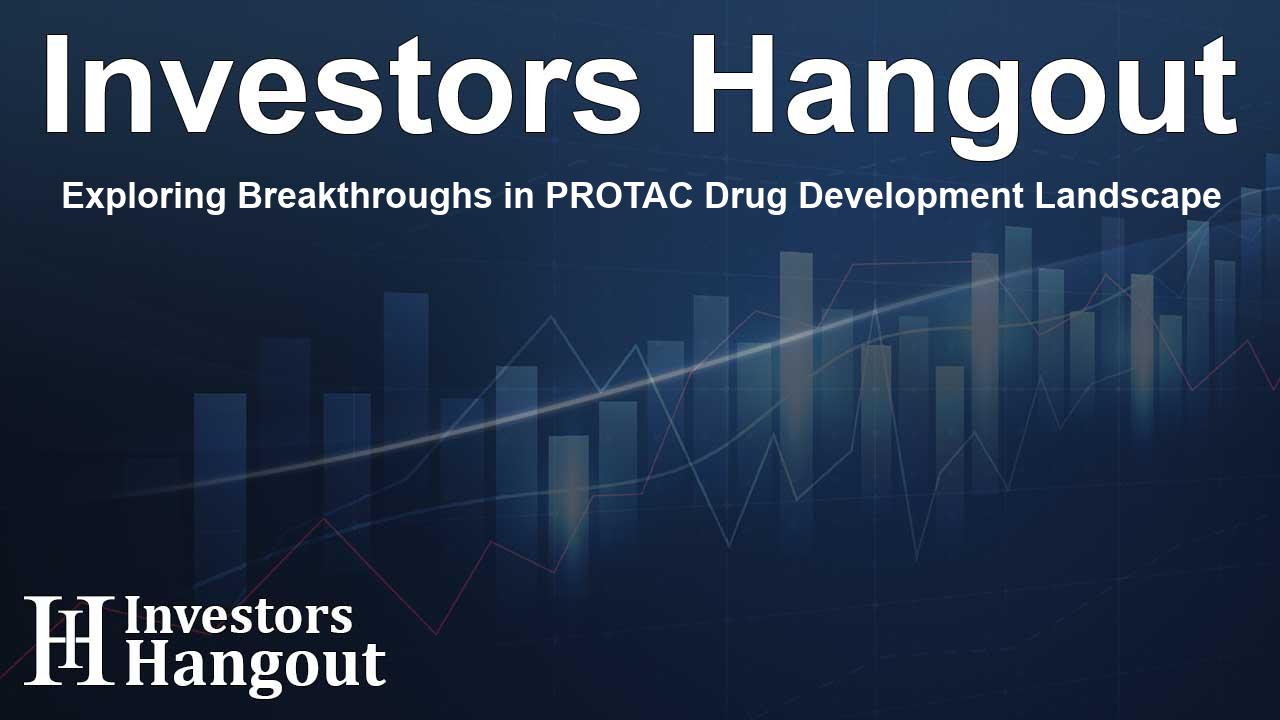Exploring Breakthroughs in PROTAC Drug Development Landscape

Understanding PROTACs: A New Frontier in Medicine
The rise of Proteolysis Targeting Chimeras (PROTACs) marks a significant milestone in modern medicine, particularly in the realm of drug discovery. This innovative technology aims to combat the limitations of traditional small-molecule treatments by focusing on the degradation of specific proteins associated with various diseases, including cancer and neurodegenerative disorders.
How PROTACs Work
PROTACs are engineered synthetic compounds that leverage the ubiquitin-proteasome system (UPS) within cells to target and destroy disease-related proteins. Unlike conventional drugs that merely inhibit the function of these proteins, PROTACs signal them for degradation, allowing for a more effective therapeutic approach. These compounds consist of three essential components: a ligand for the E3 ubiquitin ligase, a ligand for the target protein, and a linker that connects the two. Upon entering a cell, PROTACs bind to the target protein and recruit the E3 ligase, leading to the targeted protein’s destruction.
The Benefits of Targeted Protein Degradation
A significant advantage of PROTAC therapy is its ability to target specific proteins selectively, minimizing off-target effects that are commonly witnessed with standard inhibitors. This specificity can lead to enhanced safety profiles, reducing the risk of adverse side effects associated with broad-acting drugs. Additionally, PROTACs provide a strategic way to overcome resistance mechanisms seen in various diseases, particularly in cancer, by directly targeting the proteins that drive resistance.
Applications in Cancer Treatment
Cancer treatment remains a primary focus in PROTAC research. These compounds have been actively explored for their ability to degrade specific oncoproteins that play crucial roles in the proliferation of tumors. Notably, in preclinical studies, PROTACs targeting mutated forms of oncogenic proteins, such as KRAS, have shown promising results. By effectively degrading these proteins, PROTACs may not only inhibit tumor growth but also lead to sustainable remission outcomes compared to traditional therapies.
Addressing Neurodegenerative Diseases
Neurodegenerative diseases present unique challenges due to protein aggregation and misfolding. PROTAC technology offers a groundbreaking method for tackling proteins implicated in conditions like Alzheimer’s and Parkinson’s disease. Efforts are underway to develop PROTACs capable of targeting tau and ?-synuclein, two proteins known for their pathological accumulation. By facilitating the removal of these aggregates, PROTACs hold promise for slowing disease progression and improving patient outcomes.
Clinical Trials and Future Prospects
While the efficacy of PROTACs is being established through clinical trials, extensive research is necessary to ensure their safety and determine optimal dosing strategies. Collaboration among various stakeholders, including researchers and healthcare professionals, is crucial for the successful advancement of this promising therapeutic approach. As the scientific community continues to explore the potential of PROTACs, there is hope that these therapies will reshape treatment methodologies across oncology and beyond.
Innovations in PROTAC Research
Recent developments in the PROTAC sector highlight the commitment to innovation in drug design, with new platforms emerging that enhance the specificity and effectiveness of these compounds. The expanding landscape of PROTAC technology signifies not only a shift in how researchers view protein interaction but also a step toward more efficient and targeted treatment solutions. Companies are heavily invested in the research and development of PROTACs, indicating a bright future for this therapeutic class.
Frequently Asked Questions
What are PROTACs?
PROTACs are synthetic compounds designed to selectively target and degrade specific proteins within cells, offering a new strategy in drug development.
How do PROTACs differ from traditional drugs?
Unlike traditional drugs that inhibit protein activity, PROTACs signal proteins for degradation, which may provide more effective treatment options and a favorable safety profile.
What diseases are primarily targeted by PROTACs?
PROTACs are being explored for their potential to treat various diseases, particularly cancer and neurodegenerative disorders like Alzheimer’s and Parkinson’s.
What is the current status of PROTAC clinical trials?
PROTACs are undergoing early-phase clinical trials to assess their safety and efficacy, with promising results in preclinical models.
Why is collaboration important in PROTAC research?
Collaboration among researchers, clinicians, and pharmaceutical companies is crucial to advance PROTAC technology and develop effective therapeutic solutions.
About Investors Hangout
Investors Hangout is a leading online stock forum for financial discussion and learning, offering a wide range of free tools and resources. It draws in traders of all levels, who exchange market knowledge, investigate trading tactics, and keep an eye on industry developments in real time. Featuring financial articles, stock message boards, quotes, charts, company profiles, and live news updates. Through cooperative learning and a wealth of informational resources, it helps users from novices creating their first portfolios to experts honing their techniques. Join Investors Hangout today: https://investorshangout.com/
Disclaimer: The content of this article is solely for general informational purposes only; it does not represent legal, financial, or investment advice. Investors Hangout does not offer financial advice; the author is not a licensed financial advisor. Consult a qualified advisor before making any financial or investment decisions based on this article. The author's interpretation of publicly available data shapes the opinions presented here; as a result, they should not be taken as advice to purchase, sell, or hold any securities mentioned or any other investments. The author does not guarantee the accuracy, completeness, or timeliness of any material, providing it "as is." Information and market conditions may change; past performance is not indicative of future outcomes. If any of the material offered here is inaccurate, please contact us for corrections.